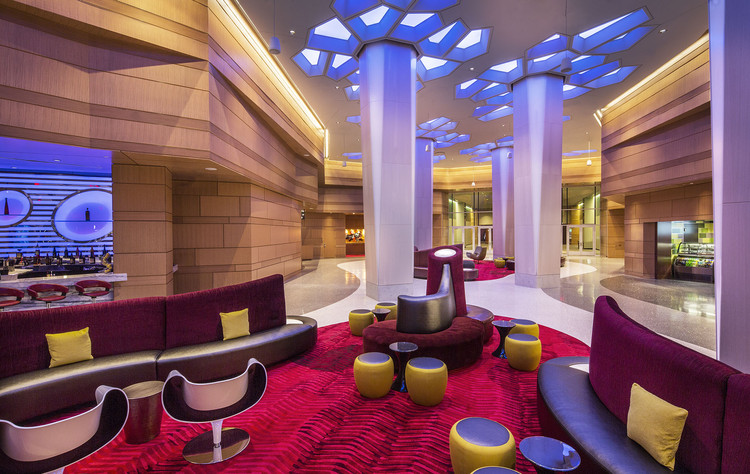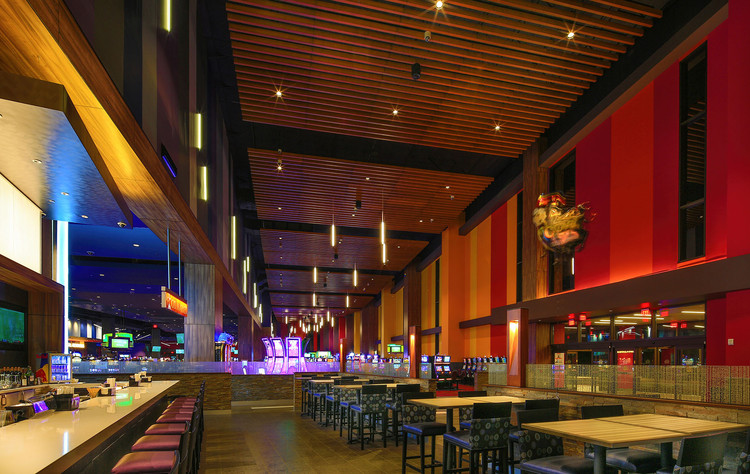“Architecture is Vital to Native Culture”: Sam Olbekson on Indigenous Design and Social Justice

Social justice begins with building understanding and community. For Sam Olbekson, Principal of Native American Design at Cuningham Group and Founder of Full Circle Indigenous Planning, community holds a deep relationship to local cultures and traditions. As a member of the White Earth Nation of Ojibwe, Sam brings the perspective of a tribal member who grew up in Native communities, both on and off the reservation. Today, he’s using design to reflect contemporary social values and build for future generations.




 + 16
+ 16

Olbekson has more than 20 years of experience working with Native American clients on culturally significant planning and design projects throughout Indigenous communities. In an exclusive interview with ArchDaily, Sam explores how he’s helping plan and design projects from both a Native perspective, and as a designer looking to create more sustainable and equitable futures.
Why did you choose to study architecture and urban design?
My interest in architecture as a career stemmed from a desire to address the social cultural, and environmental issues facing both urban and rural tribal communities from an Indigenous perspective. Knowing I had a strong interest in art and social issues I was encouraged by a Native American mentor early in high school to consider architecture. At that time, we didn’t know if any Native architects even existed and believed it would be an important way to contribute to contemporary Native culture and community-building from a social and artistic perspective.

A beautiful aspect of Anishinaabe culture is that there is no word for “architecture” or even “art” in our traditional language. This reflects a world view where art, beauty, function, and cultural meaning are interwoven into daily life rather than being compartmentalized into separate concepts. Everything is related. An Ojibwe language teacher once gave me the phrase, “Nimazini bii-aanan chi-waakaa’iganan ge-ozhichigaadegin mii iiw enanokii’yann,” or “I draw the houses, the ones that will be built, for my work.” I was told to keep that phrase close to me as I pursued my education and professional career to remind myself of who I am and that I must bring knowledge back home and help rebuild and strengthen our Native communities. Each of us has an inner drive and grit that is the source of the long hours, patience and, ultimately, the reward of being part of a wonderful set of design contributions. My source has been my culture and my people and the reason I continue to have a strong passion for community-driven architecture and urban design.
You founded Full Circle Indigenous Planning as a Native American-owned planning and visioning design firm. What is the mission of your practice and your work?
The mission of Full Circle Indigenous Planning is simply to serve tribal communities in their efforts to build their economies, preserve culture, and thrive. I strive to balance the relationship between traditional architectural principles and the requirements of contemporary Native American culture and society. Like other cultural and artistic traditions, architecture and place-making inherently reflects a community’s values and beliefs and can transmit vital cultural knowledge and customs from preceding generations to the next. Buildings are physical manifestations of complex constructs of cultural meaning, social relationships, and community needs. They can be fun, inspiring, educational, and beautiful, helping to promote rich cultural ways of living life.


Architecture is vital to Native culture and a powerful conveyor of identity that can achieve a balance between the traditions of the past, the necessities of the present, and the opportunities for the future. We strive to create beautiful, meaningful, and inspiring buildings and to help shape the relationships of these buildings through community planning and urban design. My approach to contemporary Native American architecture and design is to be inventive, environmentally responsible, culturally specific, and to reflect the needs of modern tribal development while keeping tradition at heart. We work with tribal communities, institutions, and developments to ensure that projects meet both the specific functional and aesthetic needs of a development, but also meet the broader goal to provide better lives and opportunities for Native community members to succeed.

The death of George Floyd was a devastating reminder of the ongoing crisis of structural racism and oppression. What ways can architects and designers create change and build equity in their communities?
Our related professions have an unprecedented opportunity to rethink and address the core issues and underlying structures in place that have contributed to a broken and elitist system of design-thinking. This system has worked for some, but certainly has left many important voices out of the planning and design of their own communities. The real change we need is to truly recognize that all things are related. The relationship between design, health, equity, community-building, culture, justice, economic opportunity, infrastructure, and many other societal factors are all inextricably linked. Good design can’t omit any of those.
Our profession must be committed to a sustained and long-term effort to tackle core social issues to initiate true structure change. Every architect and designer who saw what happened to George Floyd and the resulting social movement and uprising is responsible to acknowledge that justice and equity can and must be part of every design solution.

What are some recent projects you’ve been working on?
I have been fortunate to work on many economic growth and community-building projects for tribal communities all over the country throughout my career. I am currently working on a number of projects that are focused heavily on community-building including:
- A major renovation and expansion of the Minneapolis American Indian Center, a nonprofit social service and cultural organization that serves the local urban Native American population.
- The Wakan Tipi Center, a cultural facility honoring an important Dakota historical site in the Bruce Vento Nature Sanctuary in St. Paul, Minnesota.
- Homeward Bound, a temporary living center for the unsheltered Native American population in Minneapolis.
- A temporary COVID testing site for the Native American Community Clinic.
- A larger clinic expansion for the Native American Community Clinic in Minneapolis that focuses on culturally-based health services.
- A mixed-use project that includes a mental health and substance abuse clinic located in the ground level of an affordable housing project.
- An expansion to All My Relations Arts, a contemporary art institution highlighting Native American artists.
- The American Indian Cultural Corridor, an urban design cultural corridor in Minneapolis.


Changes due to COVID-19 have been swift. How do you think the pandemic will shape design?
COVID-19 has highlighted a number of important design needs and disparities unique to tribal communities that require a culturally-specific design response, especially in healthcare design. Native American communities are culturally diverse, unique, and have endured a long history of historical trauma that has impacted trust, access, and utilization of healthcare. Across every indicator, Native Americans face massive disparities in health. Native American communities thrive together, and healing is best done as a community. Effective efforts in preventative care, community education, and care of Native American community members impacted by COVID-19 infection will succeed when healthcare practitioners thoughtfully and carefully tailor services to each tribal community and individual.

Many socio-economic factors and other historical disparities contribute to a lower life expectancy and a disproportionate disease burden for Native Americans. Poverty, limited access to basic utilities and services, limited access to technology, a lack of reliable transportation, and inadequate housing is common. Remote reservation communities may have to travel great distances to healthcare facilities that have intensive care units, ventilators, pharmacies, and other adequate provisions. Healthcare may be best delivered by directly bringing healthcare to the individual rather than expecting the individual to have the resources to travel to a facility in these circumstances. The unsheltered Native American community has unique challenges and tends to avoid non-Native shelters where they can feel isolated, targeted, and unwelcome. These and many other factors contribute to a need for a culturally specific and community specific response to healthcare and the COVID-19 pandemic.

Providing culturally-specific healthcare, especially by Native healthcare practitioners in the context of community and culture, is the goal of tribal healthcare institutions. The cultural practices of each Native American community are unique, but many share similar traditional medicines and culturally specific healing practices that consider the entire individual and integrate physical, spiritual, emotional, and mental health simultaneously. Facilities, both permanent and temporary, must be designed and equipped for this type of culturally informed healthcare and allow for cultural practices such as smudging and ceremony.
Tribal leadership and urban Native American health organizations familiar with the specific needs of each tribal community must provide input in any design or decision-making process. Supporting the existing structure of Native American healthcare institutions and assisting their efforts to expand their reach to the populations they serve must be both an immediate and long-term strategy to address the current COVID-19 pandemic and future healthcare needs. These and many other factors contribute to a need for a culturally and community specific design response to healthcare and the COVID-19 pandemic.

As you look to the future, are there any ideas you think should be front and center in the minds of architects and designers?
What should be front and center in the minds of architects and designers is how we can reimagine our communities, our profession, and our individual efforts to make justice and equity an integral part of everything we do. Our communities and clients are becoming more diverse, environmentally-minded and forward-thinking. Our profession must mature to reflect that reality. We need to dismantle the systems in pace that have contributed to bias in any form and capitalize on our important role as place-makers, community healers, and visionaries of an equitable and just future.
